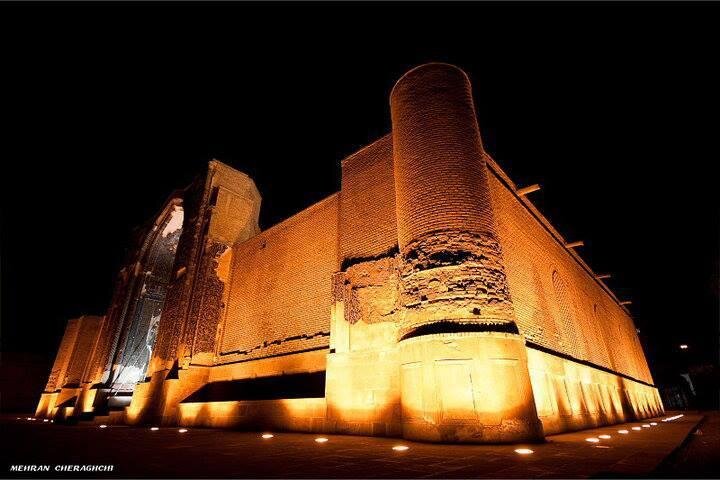Blue Mosque, Alishah Citadel shine more after lighting projects

TEHRAN – Exterior lighting of Blue Mosque and Alishah Citadel in the northwestern city of Tabriz, East Azarbaijan province, have been completed, provincial tourism chief has said.
With a budget of four billion rials (about $95,000), the lighting projects of the historical monuments have been done in coordination with the texture and color of the buildings’ materials, Ahmad Hamzezadeh said on Tuesday, CHTN reported.
He also noted that the exterior lighting of historic buildings can reflect their beauty and splendor more properly.
Blue Mosque, known as Masjed-e Kabud in Farsi, has long been distinguished for the grandeur of its intricate blue tilework and calligraphy for which it is nicknamed. The ornament took artists about a quarter-century to cover every surface.
Completed in c. 1465 it is remarkable for its simplicity, brickwork, and a great size as well. The mosque survived a devastating earthquake in 1727.
However, many parts of it caved in due to a quake struck later in the same century. Many parts of the structure were rebuilt in 1973.
In the southern part of the mosque lies a time-honored mausoleum, itself a source of splendor. It is entirely covered with massive marble slabs on which verses from the holy Quran have been engraved with a background of fine arabesques.
Arg Alishah or Alishah Citadel, also known as Arg of Tabriz, is one of the tallest and oldest historical city walls in the country. However, a huge part of it has been destroyed either by natural causes such as earthquakes or several wars it witnessed during its 700-year lifetime.
The original construction was made between 1318 and 1339, during the Ilkhanid era. During the construction, the main barrel vault collapsed and the construction was stopped afterward. Centuries later, between the eruption of the Russo-Persian War (1804-1813) and the Russo-Persian War (1826-1828), the structure was quickly reconstructed as a military compound.
The citadel, which is a great representation of Iranian architecture, was inscribed on the National Heritage list in 1931.
Capital of East Azarbaijan province, Tabriz, which is well-soaked in history and culture for millennia, embraces several historical and religious sites, including Jameh Mosque of Tabriz and UNESCO-registered Tabriz Historic Bazaar Complex to name a few.
The ancient city was declared a world craft city of carpet weaving by the World Craft in 2016. It also bore the title of the 2018 Islamic Tourism Capital.
Mahmud Ghazan, who was the seventh ruler of the Mongol Empire’s Ilkhanate, made Tabriz his capital in the late 13th century.
In 1392, the city was taken by a Turkic conqueror named Timur (Tamerlane) and some decades later the Kara Koyunlu Turkmen chose it as their capital.
Tabriz retained its administrative status under the Safavid dynasty until 1548, when Shah Tahmasb I who enjoyed the longest reign of any member of the dynasty, moved his capital westward to Qazvin.
During the next two centuries, Tabriz changed hands several times between Iran and the Ottoman Empire.
ABU/MG
Leave a Comment